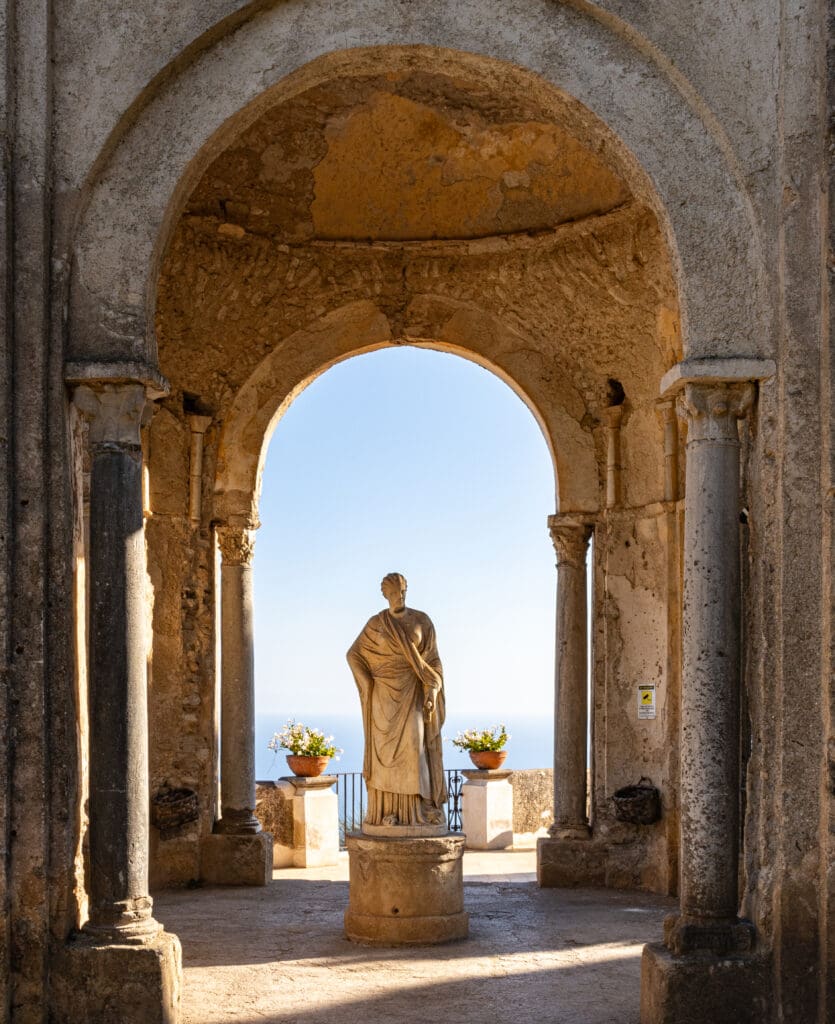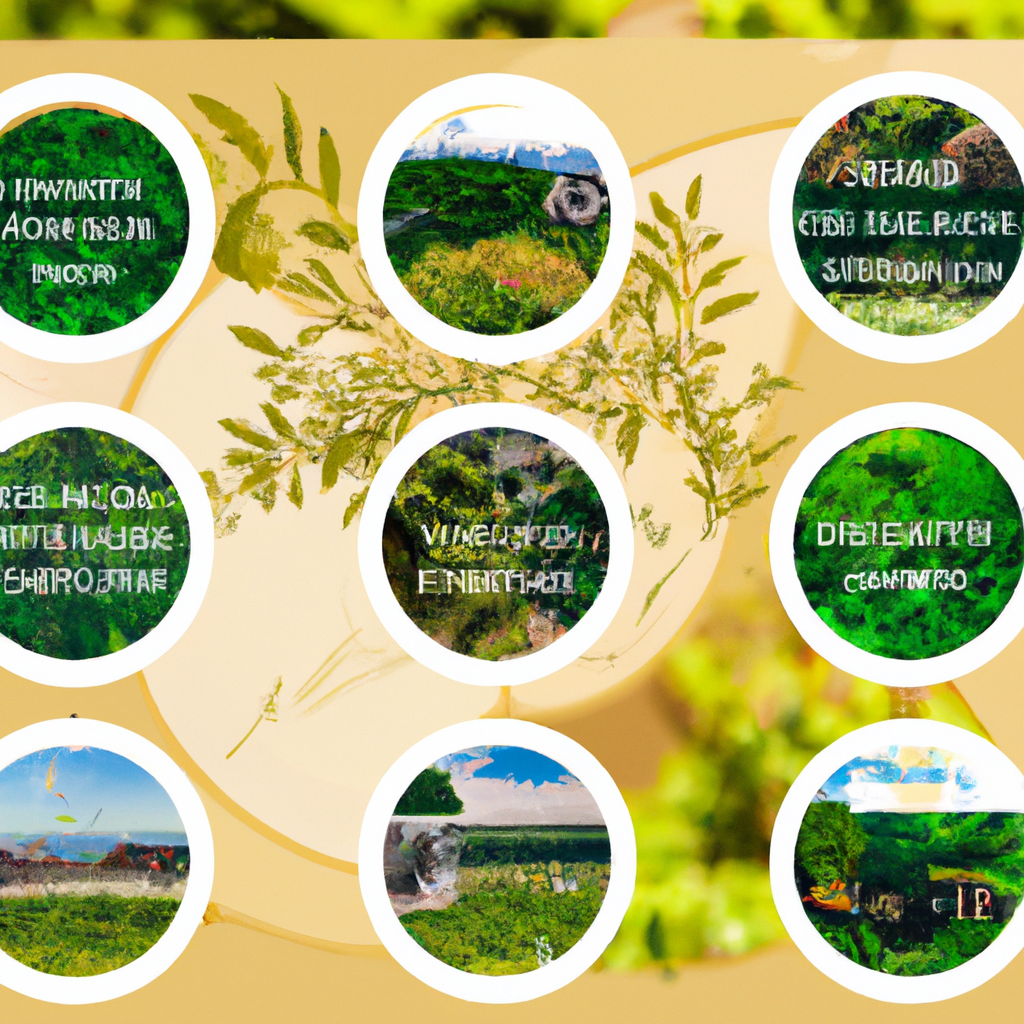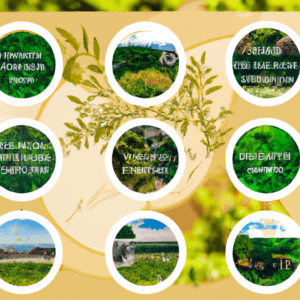Are you a conscious traveler looking to explore the world while minimizing your impact on the environment? Look no further! We have curated a list of the top 10 eco-friendly destinations that will satisfy your wanderlust while allowing you to tread lightly on our beautiful planet. From lush rainforests to pristine beaches and sustainable accommodations, these destinations offer a truly immersive and sustainable travel experience. Whether you’re a nature enthusiast, an adventure seeker, or simply someone who wants to experience the beauty of the world responsibly, this list has something for everyone. So pack your bags, grab your reusable water bottle, and get ready to embark on an eco-friendly adventure like no other!


Costa Rica
Costa Rica is renowned for its commitment to environmental conservation and sustainable tourism. One of the must-visit destinations in this beautiful country is the Monteverde Cloud Forest Reserve. This reserve is a paradise for nature lovers, with its lush greenery and diverse wildlife. As you explore the reserve, you’ll have the chance to spot rare and endangered species such as the resplendent quetzal and the three-wattled bellbird. The reserve also offers thrilling activities like ziplining through the forest canopy, providing an adrenaline rush while also allowing you to appreciate the natural beauty around you.
Another eco-friendly destination in Costa Rica is the Tortuguero National Park. Located on the Caribbean coast, this park is known for its vast network of canals and lagoons. It is home to a rich variety of wildlife, including nesting sea turtles, colorful birds, and playful river otters. By visiting Tortuguero, you’ll not only have the opportunity to observe these amazing creatures but also contribute to their conservation efforts. The park is actively involved in protecting sea turtle nests and promoting sustainable tourism practices.
Manuel Antonio National Park is another gem in Costa Rica’s eco-tourism scene. This park stands out for its stunning beaches, lush rainforests, and abundant wildlife. As you hike through the park’s trails, keep your eyes open for adorable sloths, playful monkeys, and colorful toucans. The park also offers snorkeling and scuba diving opportunities, where you can explore the vibrant marine life that thrives along its coastline. With its breathtaking scenery and commitment to conservation, Manuel Antonio National Park is a must-visit destination for any conscious traveler.
Iceland
Iceland, known as the “Land of Fire and Ice,” is a hot spot for eco-tourism due to its breathtaking landscapes and commitment to preserving its unique environment. One of the top eco-friendly destinations in Iceland is Thingvellir National Park. This park not only offers stunning views of Iceland’s iconic volcanic landscapes but is also of great historical and cultural significance. Here, you can explore the site of the world’s oldest Parliament, which dates back to the 10th century. Thingvellir is also the meeting point of the European and North American tectonic plates, providing a truly awe-inspiring experience.
Skaftafell Glacier, located within Vatnajökull National Park, is a must-visit destination for nature enthusiasts. This glacier offers breathtaking views and the opportunity to witness the effects of climate change firsthand. Guided tours allow you to explore the ice formations and learn about the importance of preserving these natural wonders. It’s a humbling experience to walk on a glacier and realize the impact that we, as travelers, have on the environment.
Húsavík, a small town in northern Iceland, is known as the whale-watching capital of Europe. With a commitment to responsible whale watching, Húsavík offers visitors the chance to observe these magnificent creatures in their natural habitat. By supporting sustainable whale-watching practices, you contribute to the conservation efforts aimed at protecting marine life. Húsavík also has a charming harbor, colorful wooden houses, and a vibrant cultural scene, making it a delightful destination for conscious travelers.
Norway
Norway, with its stunning fjords, majestic mountains, and vibrant cities, is a dream destination for eco-conscious travelers. The Lofoten Islands, situated above the Arctic Circle, offer breathtaking landscapes that are sure to leave you in awe. The islands are home to diverse wildlife, including sea eagles, seals, and whales. Hiking and kayaking opportunities abound, allowing you to immerse yourself in the pristine beauty of the archipelago. The Lofoten Islands’ commitment to sustainable tourism ensures that future generations can continue to enjoy this untouched paradise.
Trolltunga, also known as the Troll’s Tongue, is a spectacular rock formation jutting out over Ringedalsvatnet Lake. This iconic hiking destination is not for the faint of heart, as reaching Trolltunga involves a challenging trek through steep terrain. However, the reward is well worth it, with breathtaking views of the surrounding mountains and fjords. It’s important to note that while enjoying this natural wonder, it’s crucial to follow Leave No Trace principles and respect the fragile ecosystem to minimize our impact on the environment.
Senja Island, often referred to as Norway’s hidden gem, is a haven for outdoor enthusiasts. This lesser-known destination offers stunning landscapes, pristine beaches, and the chance to experience the mystical Northern Lights. You can kayak along crystal-clear fjords, hike through dramatic mountain ranges, or simply relax and soak in the tranquility of this remote island. With its commitment to sustainable tourism, Senja Island offers a truly unique and eco-friendly experience for conscious travelers.
New Zealand
New Zealand’s extraordinary natural beauty and commitment to conservation make it a top choice for eco-conscious travelers. Milford Sound, located in Fiordland National Park, is a UNESCO World Heritage site and one of New Zealand’s most iconic destinations. With its towering cliffs, cascading waterfalls, and abundant wildlife, Milford Sound offers a truly awe-inspiring experience that will leave you feeling humbled by the power of nature. By exploring Milford Sound in an eco-friendly and responsible manner, you can contribute to preserving this pristine environment.
Abel Tasman National Park, situated at the top of New Zealand’s South Island, is famous for its golden beaches, turquoise waters, and lush forests. The park offers a variety of activities, including kayaking, hiking, and wildlife spotting. You can paddle through the stunning coastline, keeping an eye out for playful seals and dolphins, or embark on one of the park’s picturesque hiking trails. Abel Tasman National Park’s commitment to conservation ensures that its natural wonders are protected for future generations to enjoy.
Tongariro National Park, located in the central North Island, is New Zealand’s oldest national park and a dual UNESCO World Heritage site. The park’s breathtaking landscapes include active volcanoes, emerald lakes, and alpine meadows. The Tongariro Alpine Crossing is one of the most popular hikes in the country, offering dramatic views and a sense of adventure. By respecting the park’s strict guidelines and practicing Leave No Trace principles, you can ensure that this pristine environment remains intact for generations to come.


Bhutan
Bhutan, often referred to as the “Last Shangri-La,” is a small Himalayan kingdom known for its commitment to Gross National Happiness and environmental preservation. Paro Taktsang, also known as Tiger’s Nest Monastery, is one of Bhutan’s most iconic landmarks. Perched on a cliffside, this sacred site offers breathtaking views and a unique spiritual experience. The hike to Tiger’s Nest is not only physically rewarding but also allows you to experience the untouched beauty of Bhutan’s natural surroundings.
Phobjikha Valley, also known as the “Valley of the Black Necked Cranes,” is a paradise for bird enthusiasts. This pristine valley is a wintering ground for the endangered black-necked cranes, which migrate here from the Tibetan Plateau. Visitors can observe these majestic birds in their natural habitat and learn about the local efforts to protect them. The valley’s commitment to sustainable tourism ensures that the delicate balance between wildlife conservation and community livelihoods is maintained.
Punakha Dzong, one of Bhutan’s most spectacular fortresses, is an architectural masterpiece set against the backdrop of the majestic Himalayas. Located at the confluence of two rivers, the Punakha Dzong is a testament to Bhutanese craftsmanship and Buddhist traditions. By visiting this cultural heritage site, you not only immerse yourself in Bhutan’s rich history but also contribute to the preservation of its unique cultural and natural heritage.
Australia
Australia is a vast and diverse country with a wealth of eco-friendly destinations for conscious travelers. The Great Barrier Reef, a UNESCO World Heritage site, is a must-visit destination for its unparalleled marine biodiversity. Snorkeling or diving in the pristine waters of the reef allows you to witness the vibrant coral ecosystems and the colorful array of marine life they support. It’s important to choose operators that practice responsible tourism to minimize our impact on this fragile ecosystem.
The Daintree Rainforest, located in Queensland, is the oldest continuous rainforest in the world. This unique ecosystem is home to countless plant and animal species found nowhere else on Earth. By exploring the Daintree Rainforest with a knowledgeable guide, you can gain a deeper understanding of its ecological importance and the need to protect it. Opting for low-impact activities like guided walks and kayaking tours allows you to appreciate the beauty of the rainforest while minimizing your impact on its delicate balance.
Freycinet National Park, situated in Tasmania, is famous for its stunning coastal landscapes and crystal-clear waters. The park’s most iconic feature is Wineglass Bay, which boasts a perfect crescent shape and dazzling white sand. Hiking to the Wineglass Bay lookout rewards you with panoramic views that will take your breath away. Freycinet National Park is dedicated to sustainable tourism practices, ensuring that future generations can continue to enjoy its pristine beauty.


Canada
Canada’s vast wilderness and commitment to environmental conservation make it an ideal destination for eco-conscious travelers. Banff National Park, located in the Canadian Rockies, is a UNESCO World Heritage site and a paradise for outdoor enthusiasts. Its towering mountains, turquoise lakes, and abundant wildlife make it a photographer’s dream. By supporting the park’s sustainable tourism initiatives, such as using public transportation and following trail guidelines, you can contribute to the protection of this pristine natural environment.
Gros Morne National Park, situated in Newfoundland and Labrador, offers stunning landscapes and unique geological features. This park is a testament to the Earth’s history, with its exposed mantle and ancient fjords. Exploring Gros Morne allows you to witness the powerful forces that have shaped our planet over millions of years. By engaging in responsible hiking and camping practices, you help protect this fragile ecosystem and ensure that future generations can appreciate its wonders.
Tofino and Pacific Rim National Park Reserve, located on Vancouver Island, offer a blend of pristine beaches, old-growth rainforests, and diverse wildlife. This coastal paradise is a haven for surfers, nature lovers, and those seeking tranquility. Tofino’s commitment to sustainable tourism can be seen in its eco-friendly accommodations and locally sourced cuisine. By embracing these initiatives and immersing yourself in the natural beauty of the area, you become a partner in its conservation and preservation.
Finland
Finland’s pristine nature and commitment to sustainable tourism make it an ideal destination for eco-conscious travelers. Nuuksio National Park, located just outside Helsinki, offers a peaceful escape into the wilderness. Its unspoiled forests, tranquil lakes, and rugged landscapes provide the perfect setting for hiking, camping, and wildlife spotting. By following the park’s Leave No Trace principles and respecting the local flora and fauna, you help preserve this natural oasis.
Finnish Lakeland, with its countless lakes and tranquil beauty, is a paradise for nature enthusiasts. Exploring this region by canoe or paddleboard allows you to immerse yourself in the peaceful serenity of Finland’s nature. The Finnish tradition of “Everyman’s Rights” allows you to enjoy outdoor activities like fishing and camping, while also respecting the environment and other visitors. Finnish Lakeland is a testament to the importance of sustainable tourism practices and the harmonious relationship between people and nature.
Rovaniemi, the capital of Finnish Lapland, is known as the official home of Santa Claus and the gateway to the Arctic Circle. In addition to its magical Christmas spirit, Rovaniemi offers countless opportunities to experience the wonders of the Arctic. From husky sledding to reindeer safaris, you can engage in activities that promote local livelihoods and sustainable tourism. By embracing the Arctic’s unique culture and environment, you contribute to its preservation for generations to come.


Thailand
Thailand’s rich biodiversity, stunning landscapes, and commitment to ecological conservation make it a top choice for eco-conscious travelers. Khao Sok National Park, located in southern Thailand, is home to one of the world’s oldest rainforests. Exploring this ancient ecosystem allows you to witness a staggering array of plant and animal species, including elephants, gibbons, and hornbills. By choosing responsible tour operators and respecting park regulations, you can ensure the protection of this biodiverse haven.
The Similan Islands, located in the Andaman Sea, are a paradise for divers and snorkelers. With their crystal-clear waters, vibrant coral reefs, and abundant marine life, these islands offer incredible underwater experiences. Sustainable diving practices, such as observing marine life from a distance and not touching or standing on coral, are crucial for preserving the fragile ecosystem. By embracing these responsible behaviors, you can help protect the Similan Islands’ extraordinary natural wonders.
Doi Inthanon National Park, situated in northern Thailand, is known as the “Roof of Thailand.” This park is home to the country’s highest peak, Doi Inthanon, which offers breathtaking panoramic views. The park’s mist-covered mountains, lush forests, and picturesque waterfalls make it a haven for nature lovers. By following designated trails and refraining from disturbing wildlife, you can play a role in ensuring the preservation of this unique natural environment.











